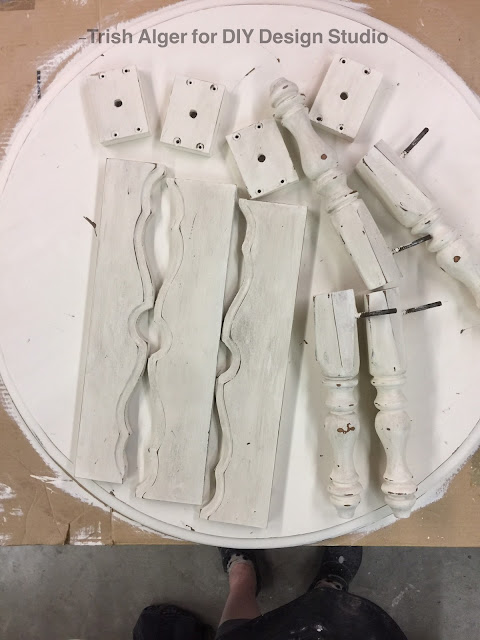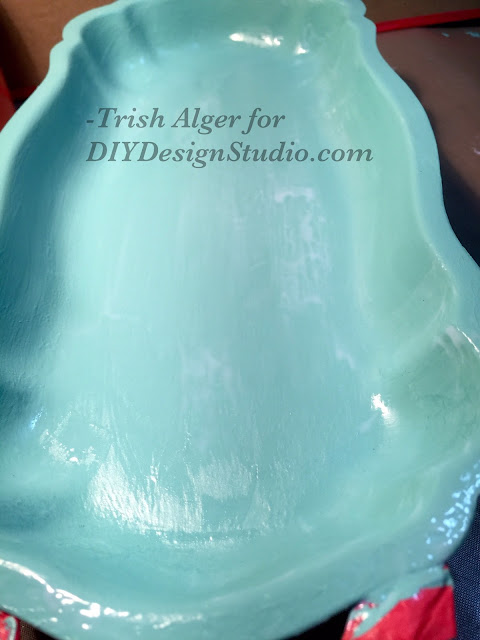Do you want to try monotype printmaking, but not sure you want to spend the money to purchase a gelatin plate? Here is an easy way to try your hand at monoprinting, using materials you either have on hand, or can purchase for less than $5.00. Here is what you will need:
1. Something to use as a printing plate. Here, I'm using a nice flat cookie sheet, but a piece of glass (use caution) from an old frame would work, as well. Even a piece of glossy cardstock will work, just make sure the surface underneath is level.
2. A brayer. Don't have a brayer? Old gift cards, or those credit card facsimiles that come in the mail, those work well. Don't have any of those, either? Fold up a piece of cardstock into a rectangle, and use the edge. I prefer using a brayer, but will use an old gift card for this round.
3. Stuff to make marks with. In the finished prints you will see I used the end of a toilet paper tube, some big bubble wrap, and some paper cut-outs. You could also use a chopstick, leaves, doilies, paper flowers, string, feathers--pretty much whatever you don't mind getting painty. (Note that on a gelatin plate, you should NOT use anything that will actually scratch into the soft surface of the gel!)
4. Paint. Use whatever you have on hand, or get a few bottles of the inexpensive stuff--it's perfectly functional, and you probably won't want to use up your better-brand paints on this experiment. I've even used old puff paints, the kind we used to use to paint t-shirts with, and it worked really well.
5. Paper. Lots of paper. Again, use whatever you have. I like printing on deli wrap, envelopes, thinner papers like printer paper, and book pages. But again, you will want quite a lot on hand--once you start printing, it's hard to stop. Plus, you may as well have fun experimenting while you have all this out, making plenty of prints with lots of layers of painty fun.
Protect your work area with some newspaper.
Squirt some paints directly onto the cookie sheet or glass, and spread it thinly with the gift card. You won't have a lot of time to ponder your prints, as the paint will dry somewhat quickly, but that's okay, you have plenty of paper to experiment with. (You DID get out lots of paper, right???)
 |
| removing paint with the end of tp tube |
Don't be afraid to add layers of color, scratch into the paint, or add more paint:
 |
adding paint with the end of a tp tube on the cookie sheet
|
Pull prints by placing paper directly on top of the wet paint, and smooth the top all over with your hands. Pull the paper off, and check out the results. Not satisfied? No problem--set it aside for moment to dry, and later print a new layer over the old print.
 |
| print using tp tube to add circles |
TIP: You do NOT need to clean the plate between each use, just use a print you didn't like much, or a piece of clean paper, or a page from a phone book to pull up any paint you don't want on the next print.
 |
| using bubble wrap and multiple layers |
 |
| using bubble wrap |
 |
using bubble wrap, heart cut-outs, and book pages
|
Your new stash of prints is ready to use! I've used mine as backgrounds in art journals, altered books, mixed media canvases, artist trading cards, greeting cards--I've even used them on collaged stone tiles. And they don't have to remain "as is," you can rubber stamp on them, draw on them, add collage images, or stencil over them.
If you enjoyed this DIY monoprinting hack process, chances are pretty good you'll LOVE printing with an actual gelatin plate--I know I do! You can find Gel Press plates and tools
HERE at Altered Pages, and
brayers HERE.
If you'd like to see a few more prints from this session, you can find them
HERE today at my blog, easily amused, hard to offend. And thanks to the girl child, I'm now trying to work the instagram. While I'm not very good at it yet, one thing I CAN do is find the people who follow me. So, if you're an arty friend and follow me, I'll (eventually) find you, as well--I'm just nosy like that!
(This is instagram me.)
Happy Thursday!
:) trisha
























































